Quantitative Evaluation of China’s Biogenetic Resources Conservation Policies Based on the Policy Modeling Consistency Index Model
Abstract
1. Introduction
2. Literature Review
3. Research Design
3.1. Research Methodology
3.2. Sample Sources
4. Policy Text Analysis
5. PMC Index Model Construction
5.1. Variable Identification and Indicator Selection
5.2. Construction of Multiple Input–Output Tables
5.3. Calculation Method of PMC Index Model
5.4. The Method of PMC Index Model Surface Drawing
6. Empirical Measurements
6.1. Selection of the Sample of Policies for Empirical Evaluation
6.2. Grade Evaluation
6.3. PMC Index Calculation
6.4. Presentation of PMC Surface Plot
7. Results and Discussion
7.1. General Evaluation of the Empirical Results
7.2. Evaluation by Grade
8. Conclusions
Author Contributions
Funding
Institutional Review Board Statement
Informed Consent Statement
Data Availability Statement
Conflicts of Interest
References
- Boursot, P.; Desmarais, E. Genetic evaluation of biodiversity. Biofuture 1997, 17, 29–33. [Google Scholar] [CrossRef]
- Fransen, A.; Bulkeley, H. Transnational Governing at the Climate-Biodiversity Frontier: Employing a Governmentality Perspective. Glob. Environ. Politics 2024, 24, 76–99. [Google Scholar] [CrossRef]
- Salgotra, R.K.; Chauhan, B.S. Genetic diversity, conservation, and utilization of plant genetic resources. Genes 2023, 14, 18–25. [Google Scholar] [CrossRef] [PubMed]
- Wang, T.; Li, M.; Rasheed, M.F. The nexus between resource depletion, price fluctuations, and sustainable development in expenditure on resources. Resour. Policy 2024, 89, 117–125. [Google Scholar] [CrossRef]
- Francolini, E.M.; Mann-Lang, J.B.; McKinley, E.; Mann, B.Q.; Abrahams, M.I. Stakeholder perspectives on socio-economic challenges and recommendations for better management of the Aliwal Shoal Marine protected area in South Africa. Mar. Policy 2023, 148, 102–121. [Google Scholar] [CrossRef]
- Sherman, B.; Henry, R.J. The Nagoya Protocol and historical collections of plants. Nat. Plants 2020, 6, 430–432. [Google Scholar] [CrossRef] [PubMed]
- Nam, M. Analysis of genetic resources protection policy under the perspective of intellectual property rights. J. Cent. Univ. Natl. (Sci. Ed.) 2019, 28, 53–56. [Google Scholar]
- Dai, S.; Zhang, W.; Zong, J.; Wang, Y.; Wang, G. How effective is the green development policy of China’s Yangtze River economic belt? A quantitative evaluation based on the PMC-index model. Int. J. Environ. Res. Public Health 2021, 18, 7676. [Google Scholar] [CrossRef]
- Hoban, S.; da Silva, J.M.; Hughes, A.; Hunter, M.E.; Kalamujić Stroil, B.; Laikre, L.; Mastretta-Yanes, A.; Millette, K.; Paz-Vinas, I.; Bustos, L.R.; et al. Too simple, too complex, or just right? Advantages, challenges, and guidance for indicators of genetic diversity. Bioscience 2024, 11, 49–53. [Google Scholar] [CrossRef]
- Hoban, S.; Arntzen, J.W.; Bertorelle, G.; Bryja, J.; Fernandes, M.; Frith, K.; Gaggiotti, O.; Galbusera, P.; Godoy, J.A.; Hauffe, H.C.; et al. Conservation genetic resources for effective species survival (congress): Bridging the divide between conservation research and practice. J. Nat. Conserv. 2013, 21, 433–437. [Google Scholar] [CrossRef]
- Legese, K.; Bekele, A. Assessment of challenges and opportunities for wildlife conservation in Wenchi highlands, central Ethiopia. Trop. Conserv. Sci. 2023, 16, 533–541. [Google Scholar] [CrossRef]
- Walls, S.C. Coping with constraints: Achieving effective conservation with limited resources. Front. Ecol. Evol. 2018, 6, 26–35. [Google Scholar] [CrossRef]
- Grajal, A. Biodiversity and the nation state: Regulating access to genetic resources limits biodiversity research in developing countries. Conserv. Biol. 1999, 13, 6–10. [Google Scholar] [CrossRef]
- Trommetter, M. Biodiversity and international stakes: A question of access. Ecol. Econ. 2005, 53, 573–583. [Google Scholar] [CrossRef]
- Andrade, R.; van Riper, C.J.; Goodson, D.J.; Johnson, D.N.; Stewart, W.; López-Rodríguez, M.D.; Cebrián-Piqueras, M.A.; Horcea-Milcu, A.I.; Lo, V.; Raymond, C.M. Values shift in response to social learning through deliberation about protected areas. Glob. Environ. Chang.-Hum. Policy Dimens. 2023, 78, 96–101. [Google Scholar] [CrossRef]
- Locatelli, B.; Laurenceau, M.; Chumpisuca, Y.R.; Pramova, E.; Vallet, A.; Conde, Y.Q.; Zavala, R.C.; Djoudi, H.; Lavorel, S.; Colloff, M.J. In people’s minds and on the ground: Values and power in climate change adaptation. Environ. Sci. Policy 2022, 137, 75–86. [Google Scholar] [CrossRef]
- Gollin, D.; Evenson, R. Valuing animal genetic resources: Lessons from plant genetic resources. Ecol. Econ. 2003, 45, 353–363. [Google Scholar] [CrossRef]
- Winge, T. Linking access and benefit-sharing for crop genetic resources to climate change adaptation. Plant Genet. Resour.-Charact. Util. 2016, 14, 11–27. [Google Scholar] [CrossRef][Green Version]
- Cowell, C.; Paton, A.; Borrell, J.S.; Williams, C.; Wilkin, P.; Antonelli, A.; Baker, W.J.; Buggs, R.; Fay, M.F.; Gargiulo, R.; et al. Uses and benefits of digital sequence information from plant genetic resources: Lessons learnt from botanical collections. Plants People Planet 2022, 4, 33–43. [Google Scholar] [CrossRef]
- Geary, J.; Bubela, T. Governance of a global genetic resource commons for non-commercial research: A case-study of the DNA barcode commons. Int. J. Commons 2019, 13, 205–243. [Google Scholar] [CrossRef]
- Lawson, C.; Rourke, M.; Humphries, F. Information as the latest site of conflict in the ongoing contests about access to and sharing the benefits from exploiting genetic resources. Queen Mary J. Intellect. Prop. 2020, 10, 7–33. [Google Scholar] [CrossRef]
- Putterman, D. Trade and the biodiversity convention. Nature 1994, 371, 553–554. [Google Scholar] [CrossRef] [PubMed]
- Anwar, M.; Khattak, M.S.; Popp, J.; Meyer, D.F.; Máté, D. The nexus of government incentives and sustainable development goals: Is the management of resources the solution to non-profit organisations? Technol. Econ. Dev. Econ. 2020, 26, 1284–1310. [Google Scholar] [CrossRef]
- Xu, S.; He, X.; Xu, L. Market or government: Who plays a decisive role in R&D resource allocation? China Financ. Rev. Int. 2019, 9, 110–136. [Google Scholar]
- Marjanović, N.; Jovanović, V.; Ratknić, T.; Paunković, D. The role of leadership in natural resource conservation and sustainable development—A case study of local self-government of eastern serbia. Ekon. Poljopr.-Econ. Agric. 2019, 66, 889–903. [Google Scholar] [CrossRef]
- Baker, T.; Nelson, R.E. Creating something from nothing: Resource construction through entrepreneurial bricolage. Adm. Sci. Q. 2005, 50, 329–366. [Google Scholar] [CrossRef]
- Cusack, C.; Cohen, B.; Mignone, J.; Chartier, M.J.; Lutfiyya, Z. Participatory action as a research method with public health nurses. J. Adv. Nurs. 2018, 74, 1544–1553. [Google Scholar] [CrossRef] [PubMed]
- Ylönen, M.; Salmivaara, A. Policy coherence across agenda 2030 and the sustainable development goals: Lessons from Finland. Dev. Policy Rev. 2021, 39, 829–847. [Google Scholar] [CrossRef]
- Davies, J.K.; Sherriff, N.S. Assessing public health policy approaches to level-up the gradient in health inequalities: The Gradient Evaluation Framework. Public Health 2014, 128, 246–253. [Google Scholar] [CrossRef] [PubMed]
- Kuhlmann, S. Evaluation of research and innovation policies: A discussion of trends with examples from Germany. Int. J. Technol. Manag. 2003, 26, 131–149. [Google Scholar] [CrossRef]
- Wang, G.; Yang, Y. Quantitative Evaluation of Digital Economy Policy in Heilongjiang Province of China Based on the PMC-AE Index Model. Sage Open 2024, 14, 13–19. [Google Scholar] [CrossRef]
- Brandt, L.; Biesebroeck, J.V.; Zhang, Y. Creative accounting or creative destruction? firm-level productivity growth in Chinese manufacturing. J. Dev. Econ. 2012, 97, 339–351. [Google Scholar] [CrossRef]
- Qin, Q.; Sun, Y. Assessing the Intention to Provide Human Genetic Resources: An Explanatory Model. Public Health Genom. 2020, 23, 133–148. [Google Scholar] [CrossRef] [PubMed]
- Attridge, J. Innovation models in the biopharmaceutical sector. Int. J. Innov. Manag. 2007, 11, 215–243. [Google Scholar] [CrossRef]
- Wang, N.; Wang, W.; Song, T.; Wang, H.; Cheng, Z. A quantitative evaluation of water resource management policies in China based on the PMC index model. Water Policy 2022, 24, 1859–1875. [Google Scholar] [CrossRef]
- Yang, Y.; Tang, J.; Li, Z.; Wen, J. How effective is the health promotion policy in Sichuan, China: Based on the PMC-Index model and field evaluation. BMC Public Health 2022, 22, 53–57. [Google Scholar] [CrossRef] [PubMed]
- Zhang, Y.; Wang, T.; Wang, C.; Cheng, C. Quantitative Evaluation of China’s CSR Policies Based on the PMC-Index Model. Sustainability 2023, 15, 7194. [Google Scholar] [CrossRef]
- Dai, S.; Zhang, W.; Lan, L. Quantitative Evaluation of China’s Ecological Protection Compensation Policy Based on PMC Index Model. Int. J. Environ. Res. Public Health 2022, 19, 10227. [Google Scholar] [CrossRef] [PubMed]
- Estrada, M. Policy modeling: Definition, classification and evaluation. J. Policy Model. 2011, 33, 523–536. [Google Scholar] [CrossRef]
- Huang, G.; Shen, X.; Zhang, X.; Gu, W. Quantitative evaluation of China’s central-level land consolidation policies in the past forty years based on the text analysis and PMC-index model. Land 2023, 12, 223–231. [Google Scholar] [CrossRef]
- Ruiz, E.; Yap, S.; Nagaraj, S. Beyond the ceteris paribus assumption: Modeling demand and supply assuming omnia mobilis. Soc. Sci. Electron. Publ. 2010, 17, 1522–1531. [Google Scholar]
- Zhang, Y.; Qie, H. Research on quantitative evaluation of popular entrepreneurship and innovation policies--taking the intelligence of 10 shuangchuang policies in 2017 as an example. J. Intell. 2018, 37, 158–164+186. [Google Scholar]
- Ding, X.; Fang, Y. Research on mining and quantitative evaluation of support policies for “chinese core”. Soft Sci. 2019, 33, 34–39. [Google Scholar]
- Wu, W.; Sheng, L.; Tang, F.; Zhang, A. Quantitative evaluation of manufacturing innovation policies based on feature analysis. Sci. Res. 2020, 38, 2246–2257. [Google Scholar]
- Liu, S.; Pang, Y.; Zhang, H.; Wang, B.; Ye, B. Comprehensive evaluation index system and assessment method for natural forest resources protection project in China. J. Ecol. 2021, 41, 5067–5079. [Google Scholar]
- Ma, J.; Du, G.; Xia, C. CO2 emission changes of China’s power generation system: Input-output subsystem analysis. Energy Policy 2019, 12, 1–12. [Google Scholar] [CrossRef]
- Cai, D.; Chai, Y.; Tian, Z. Quantitative evaluation of digital economy policy texts in Jilin Province based on PMC index model. Intell. Sci. 2021, 39, 139–145. [Google Scholar]
- Shi, L.; Huang, X.; Huang, J. Content analysis and quantitative evaluation of national fitness public service policy based on TM-PMC index model. China Sports Sci. Technol. 2023, 59, 13–22. [Google Scholar]
- Gu, Y.; He, D.; Huang, J.; Sun, H.; Wang, H. Research on the policy environment of China’s healthcare big data development based on PMC index model. China Health Policy Res. 2022, 15, 45–51. [Google Scholar]
- Rao, M.; Johnson, A.; Spence, K.; Sypasong, A.; Bynum, N.; Sterling, E.; Phimminith, T.; Praxaysombath, B. Building Capacity for Protected Area Management in Lao PDR. Environ. Manag. 2014, 53, 715–727. [Google Scholar] [CrossRef] [PubMed]
- Qin, T. The legislative positioning of the Biosafety Law and its unfolding. Soc. Sci. J. 2020, 248, 134–147+209. [Google Scholar]
- Liu, D.; Zhang, F.; Wu, X.; Li, J. The progress and application of genetic resources value assessment. Environ. Sustain. Dev. 2015, 40, 19–22. [Google Scholar]
- Poudel, D.; Johnsen, F.H. Valuation of crop genetic resources in Kaski, Nepal: Farmers’ willingness to pay for rice landraces conservation. J. Environ. Manag. 2009, 90, 483–491. [Google Scholar] [CrossRef] [PubMed]
- Zhang, B.; Cao, C. Policy: Four gaps in China’s new environmental law. Nature 2015, 517, 433–434. [Google Scholar] [CrossRef] [PubMed]
- Cao, C. China’s evolving biosafety/biosecurity legislations. J. Law Biosci. 2021, 8, 20. [Google Scholar] [CrossRef] [PubMed]
- Qin, M.; Yue, C.; Du, Y. Evolution of China’s marine ranching policy based on the perspective of policy tools. Mar. Policy 2020, 117, 103941. [Google Scholar] [CrossRef]
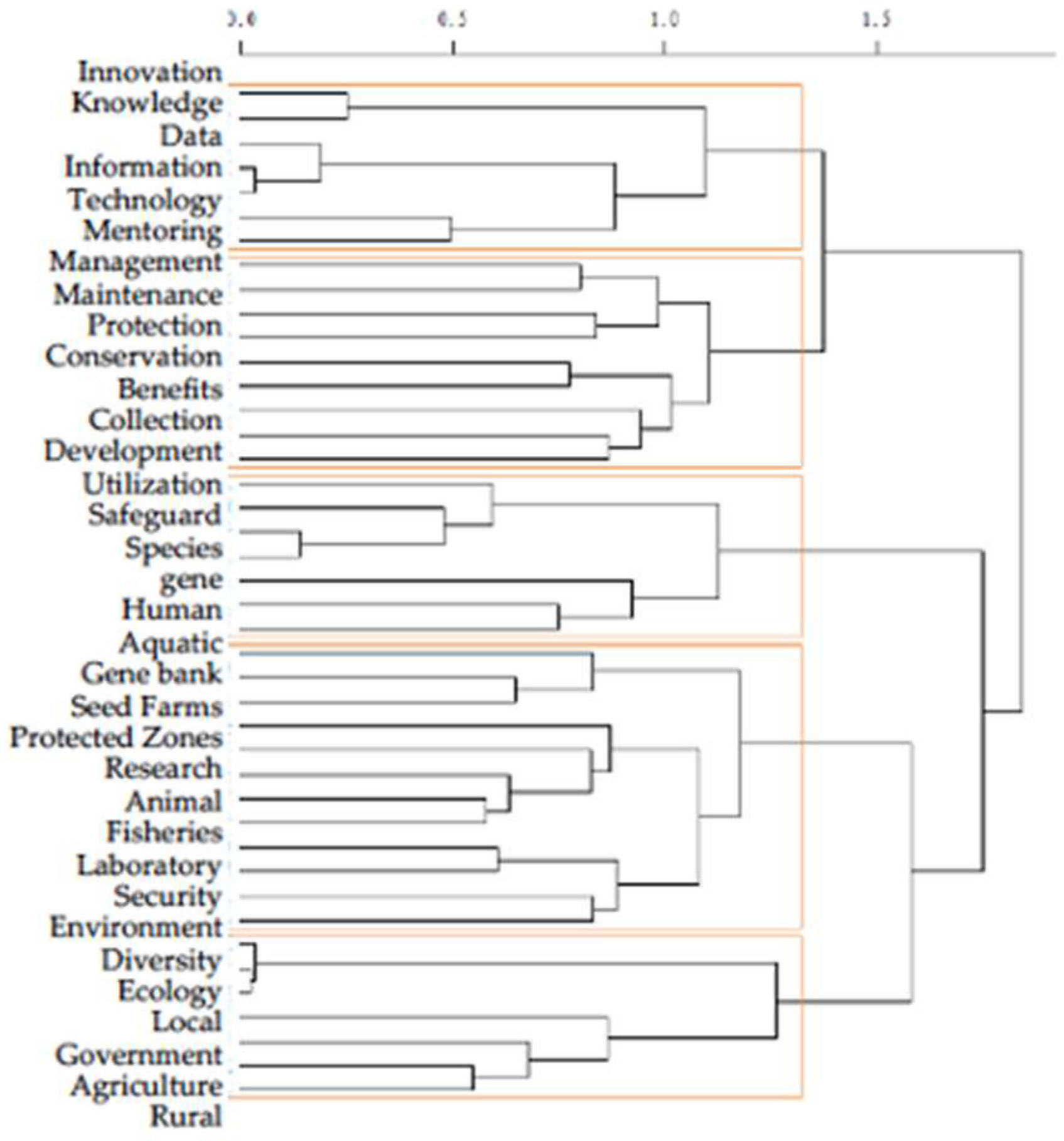
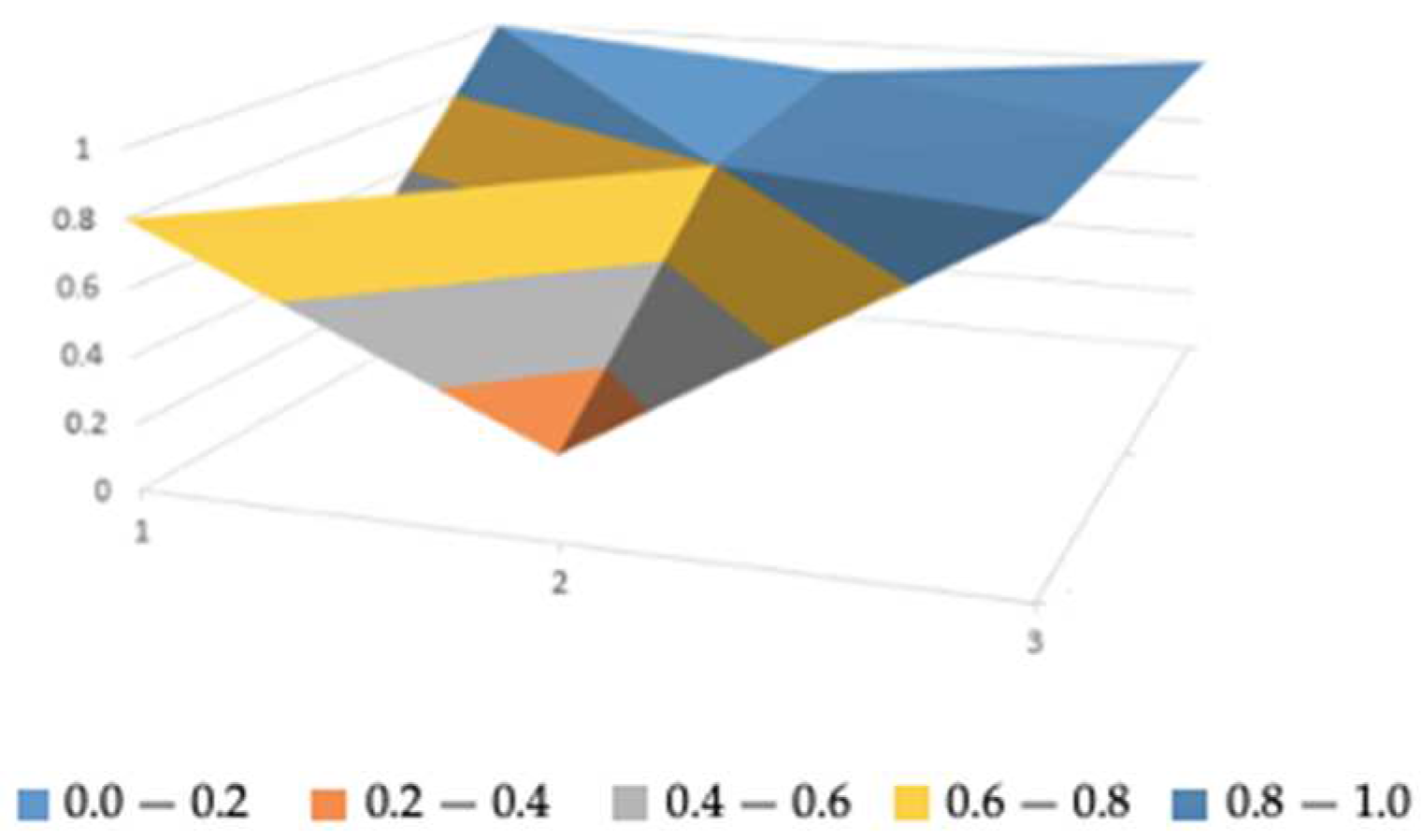
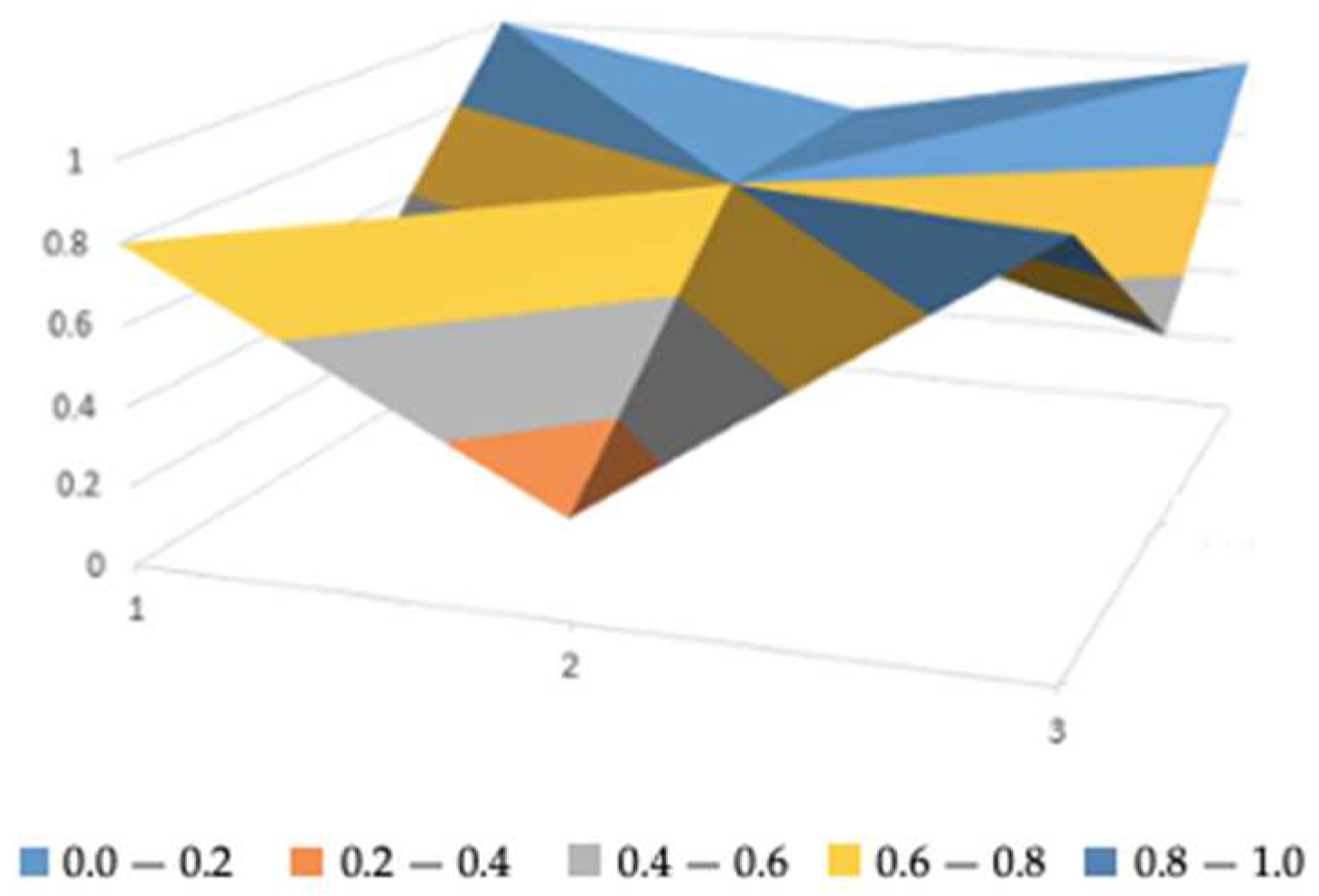
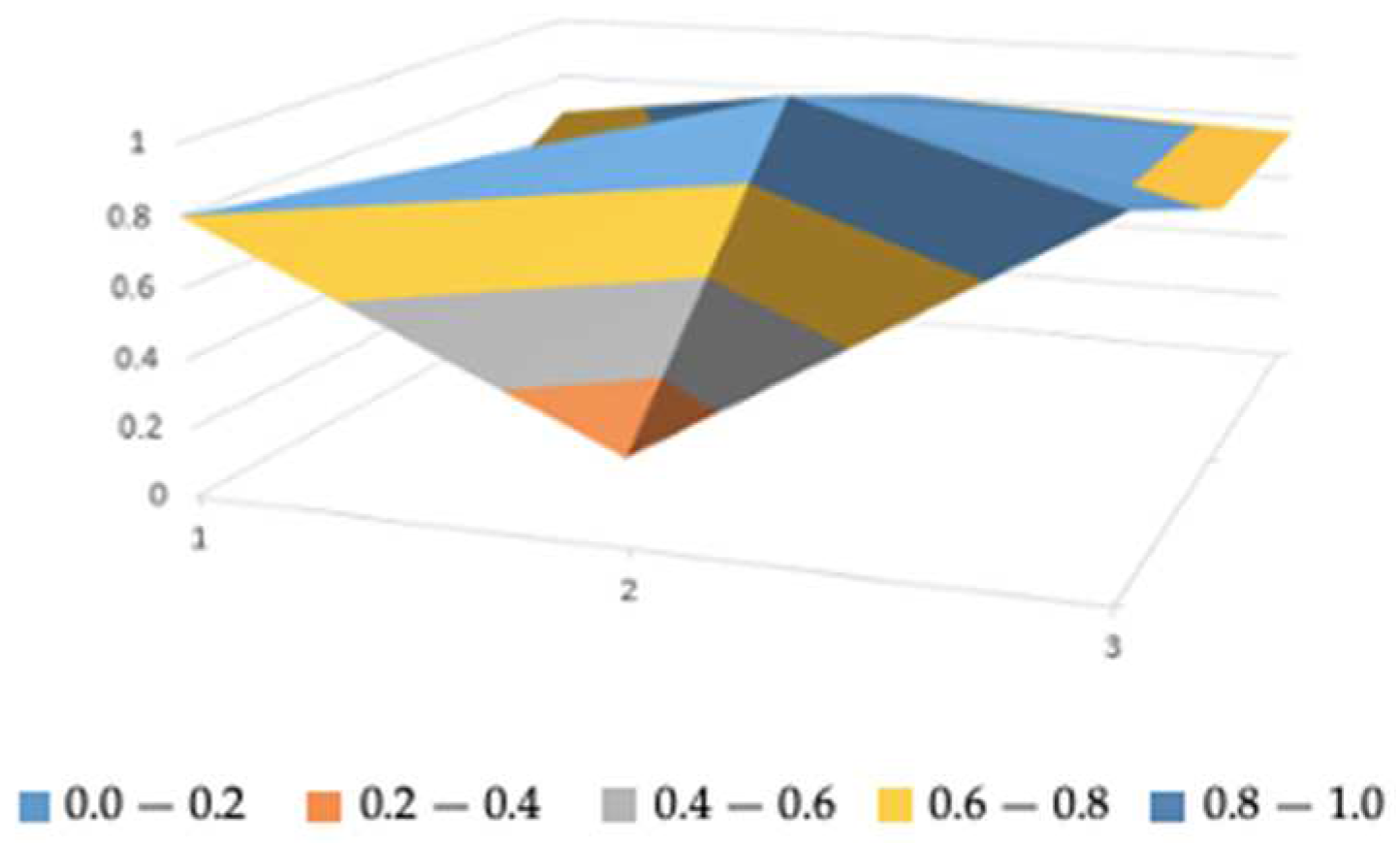
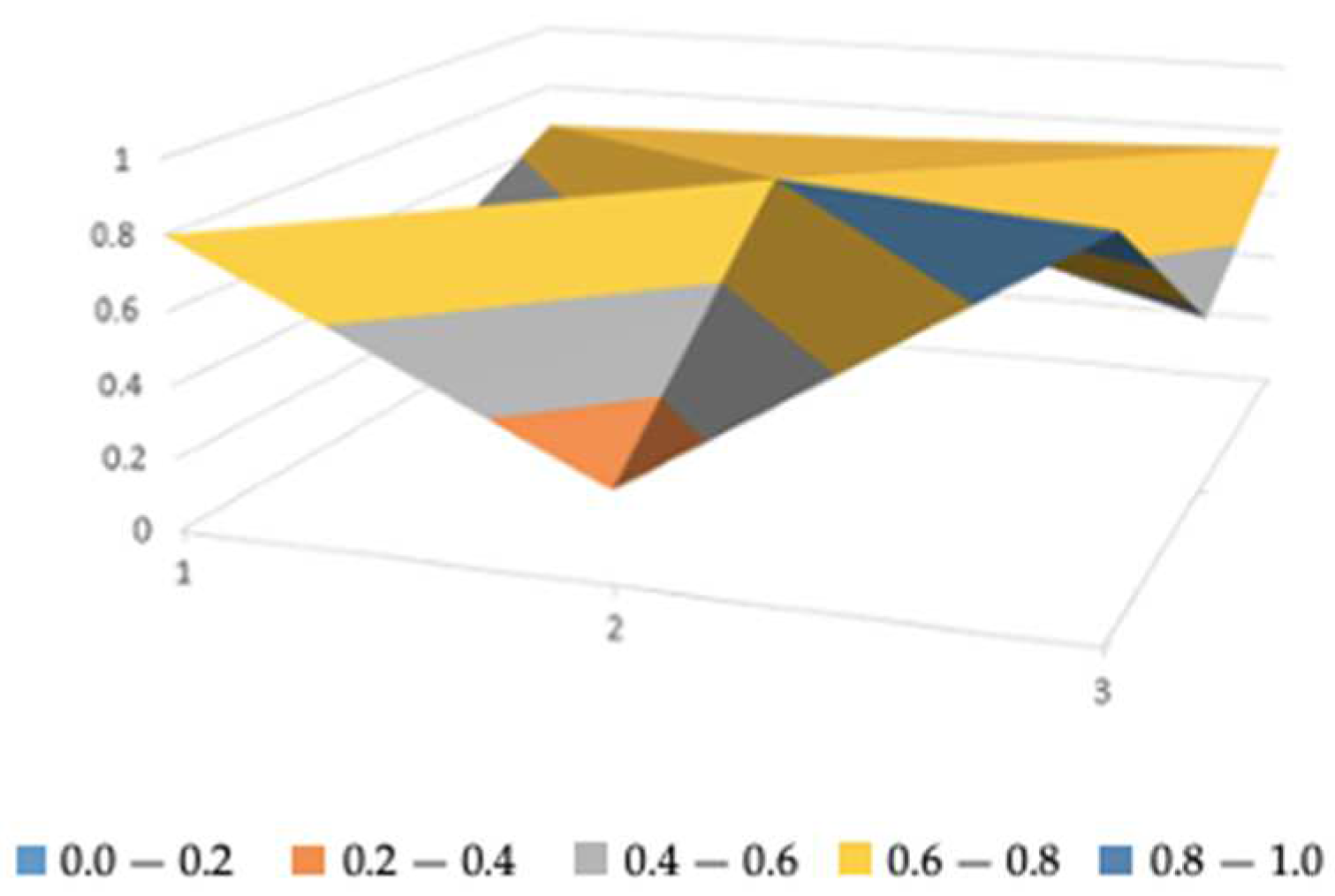


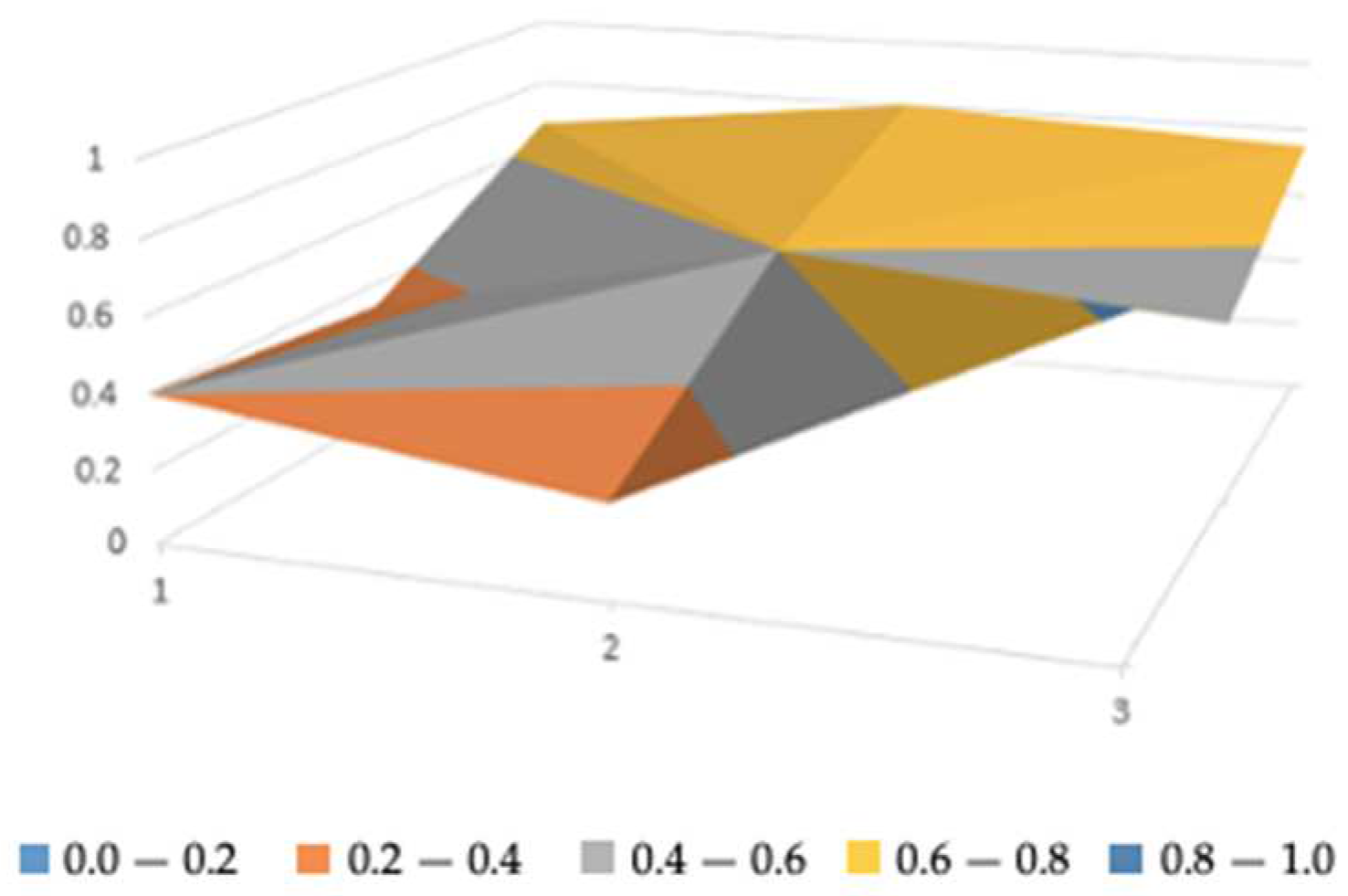
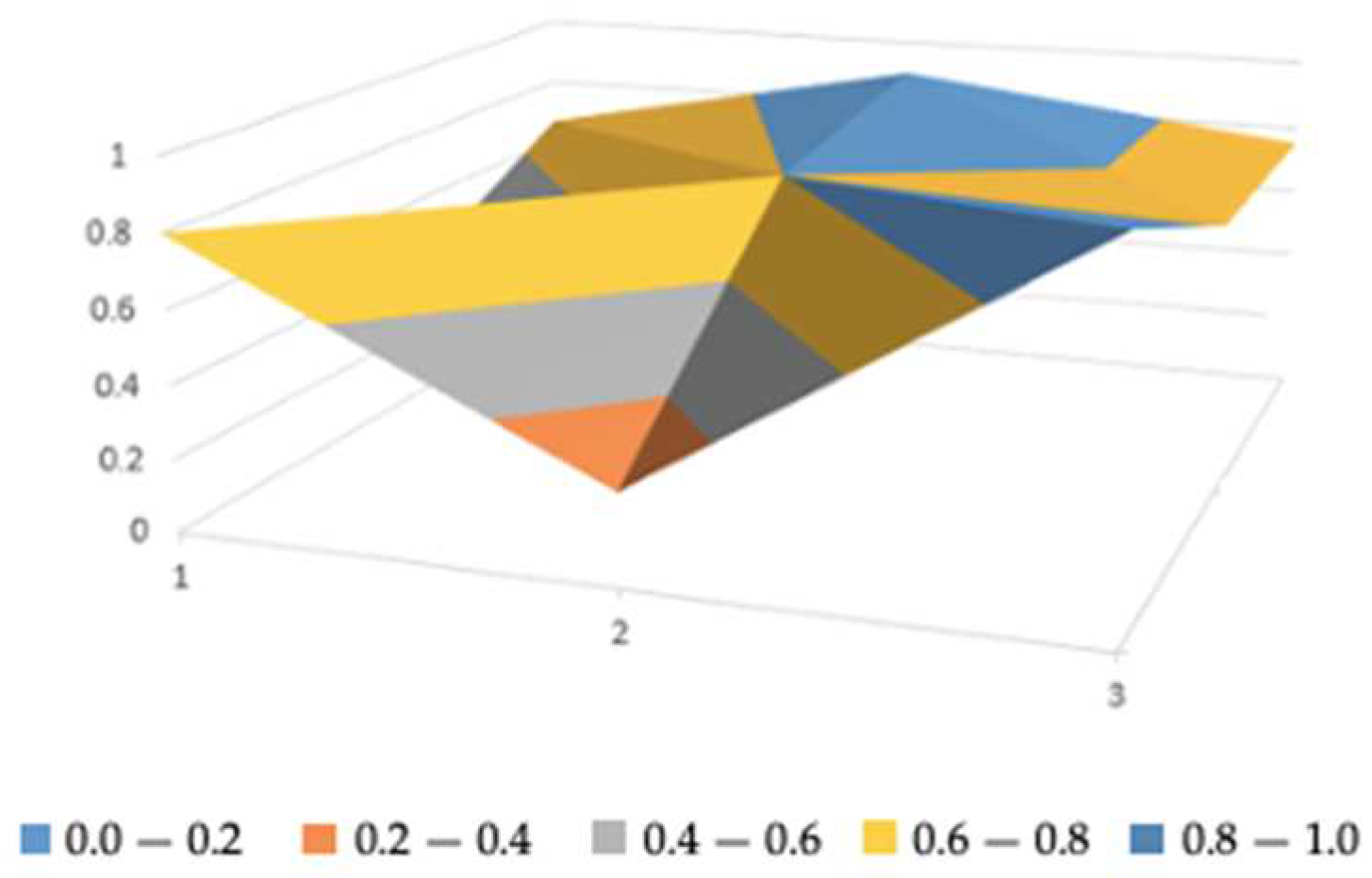
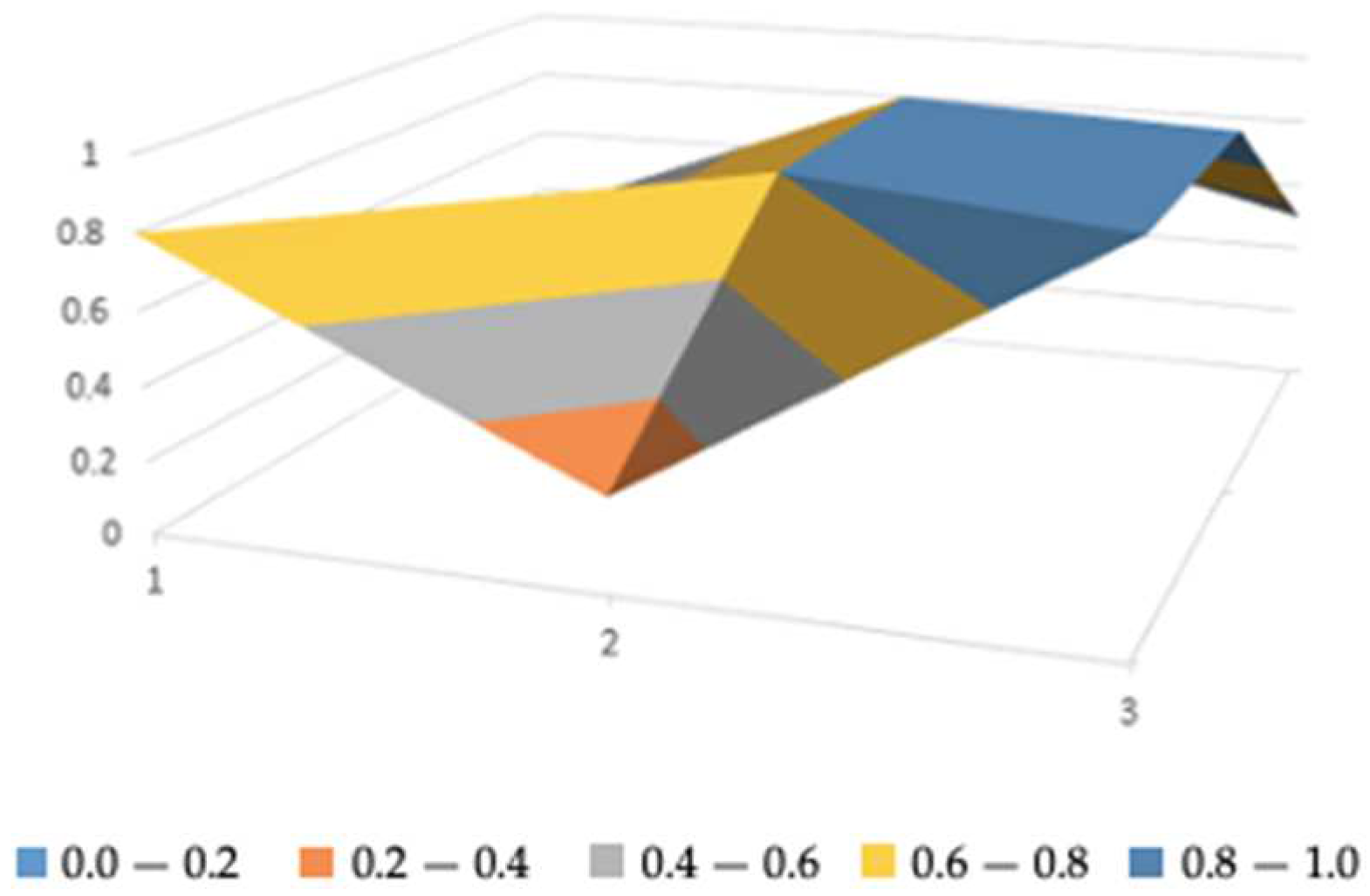
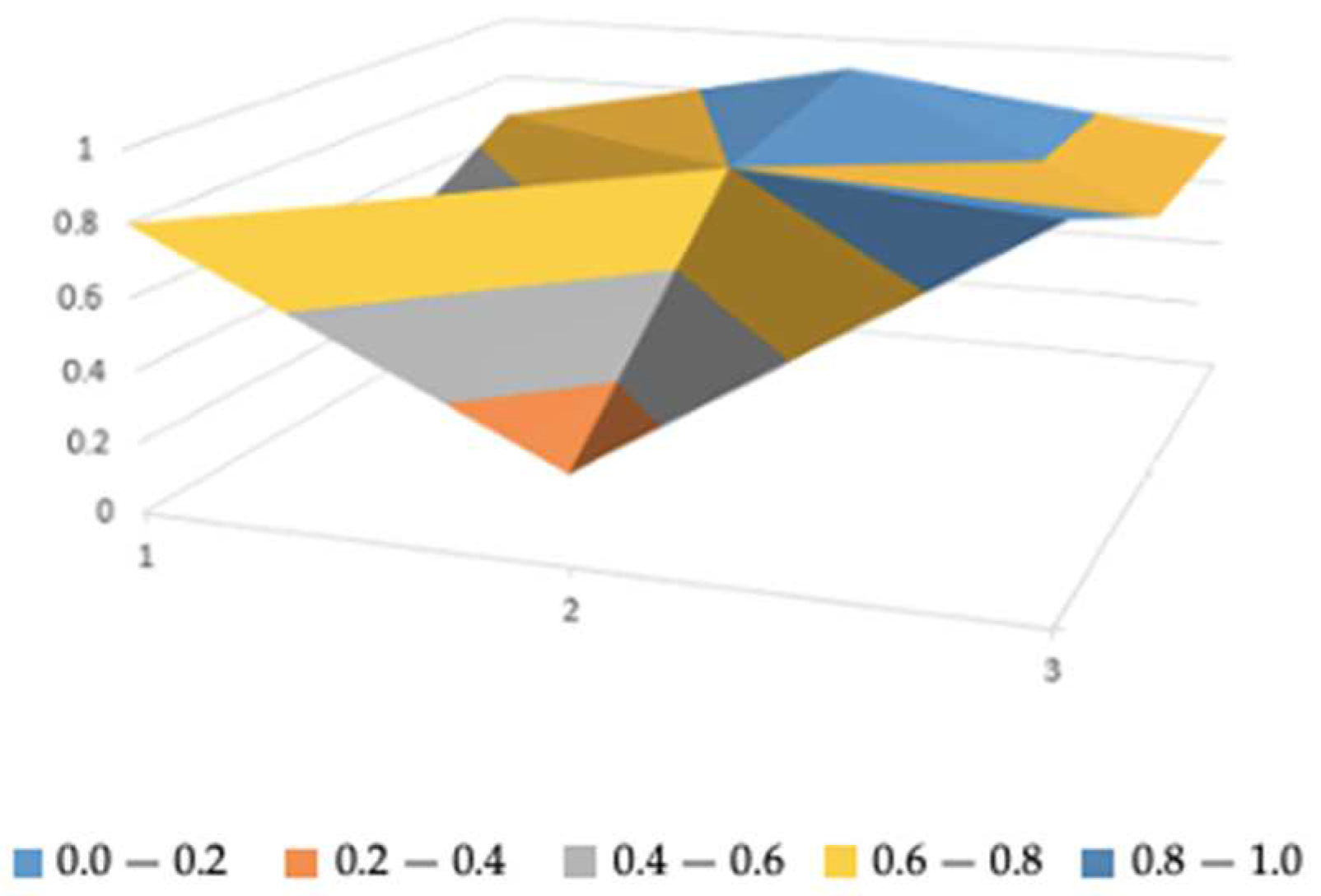
| Word | Frequency | Word | Frequency | Word | Frequency | Word | Frequency |
|---|---|---|---|---|---|---|---|
| Creatures | 4141 | Conservation | 820 | Survey | 401 | Aquatic | 255 |
| Resources | 2833 | Utilization | 782 | Livestock | 399 | Genebank | 231 |
| Genetics | 2337 | Species | 780 | Establishment | 390 | Seed Farms | 229 |
| Government | 1930 | Environment | 753 | Maintenance | 378 | Protected Zones | 220 |
| Agriculture | 1667 | Ecology | 692 | Benefits | 377 | Research | 193 |
| Diversity | 1433 | Protection | 559 | Encouragement | 371 | Animal | 188 |
| Rural | 1220 | Development | 503 | Human | 360 | Laboratory | 179 |
| Fisheries | 1009 | Prevention | 499 | Technology | 347 | Knowledge | 177 |
| Collection | 997 | Security | 441 | Production | 323 | Innovation | 169 |
| Development | 985 | Local | 440 | Revision | 283 | Microbiology | 167 |
| Safeguard | 967 | gene | 429 | Construction | 280 | Mentoring | 166 |
| Data | 906 | Promote | 416 | Organization | 277 | Enabling | 162 |
| Management | 821 | Oversight | 403 | Forestry | 263 | Information | 160 |
| First-Level Variable | No. | Second-Level Variable | No. | Metrics | Rationale for the Establishment |
|---|---|---|---|---|---|
| Policy Nature | X1 | Supervision | X1:1 | Involved or not, 1 for yes, 0 for no | Referring to the research setup of Y.A. Zhang et al. [42]. |
| Guidance | X1:2 | Involved or not, 1 for yes, 0 for no | |||
| Recommendation | X1:3 | Involved or not, 1 for yes, 0 for no | |||
| Forecasting | X1:4 | Involved or not, 1 for yes, 0 for no | |||
| Planning | X1:5 | Involved or not, 1 for yes, 0 for no | |||
| Policy Timeliness | X2 | Long-term | X2:1 | Yes or no, 1 for yes, 0 for no | Referring to the research setup of X.J. Ding et al. [43]. |
| Mid-term | X2:2 | Yes or no, 1 for yes, 0 for no | |||
| Short-term | X2:3 | Yes or no, 1 for yes, 0 for no | |||
| Policy Level | X3 | National | X3:1 | Yes or no, 1 for yes, 0 for no | Referring to the research setup of W.H. Wu et al. [44]. |
| Provincial | X3:2 | Yes or no, 1 for yes, 0 for no | |||
| Municipal | X3:3 | Yes or no, 1 for yes, 0 for no | |||
| Policy Subject | X4 | NPC Standing Committee | X4:1 | Yes or no, 1 for yes, 0 for no | Referring to the research setup of Y.A. Zhang et al. [42] and based on the policy sample’s issuing subject setting |
| General Office of the State Council | X4:2 | Yes or no, 1 for yes, 0 for no | |||
| State Ministries and Commissions | X4:3 | Yes or no, 1 for yes, 0 for no | |||
| Provincial and Municipal Offices | X4:4 | Yes or no, 1 for yes, 0 for no | |||
| Policy Area | X5 | Politics | X5:1 | Involved or not, 1 for yes, 0 for no | Referring to Ruiz Estrada’s research setup |
| Economics | X5:2 | Involved or not, 1 for yes, 0 for no | |||
| Cultural | X5:3 | Involved or not, 1 for yes, 0 for no | |||
| Social | X5:4 | Involved or not, 1 for yes, 0 for no | |||
| Science and Technology | X5:5 | Involved or not, 1 for yes, 0 for no | |||
| Policy Content | X6 | Biosecurity | X6:1 | Involved or not, 1 for yes, 0 for no | Referring to S. Liu et al. [45]’s study and setting up the content analysis based on the policy sample |
| Resource Conservation | X6:2 | Involved or not, 1 for yes, 0 for no | |||
| Seedstock Conservation | X6:3 | Involved or not, 1 for yes, 0 for no | |||
| Biodiversity | X6:4 | Involved or not, 1 for yes, 0 for no | |||
| Science and Technology Innovation | X6:5 | Involved or not, 1 for yes, 0 for no | |||
| Research | X6:6 | Involved or not, 1 for yes, 0 for no | |||
| Genetic Data | X6:7 | Involved or not, 1 for yes, 0 for no | |||
| Economic Development | X6:8 | Involved or not, 1 for yes, 0 for no | |||
| Exploitation | X6:9 | Involved or not, 1 for yes, 0 for no | |||
| Immigration | X6:10 | Involved or not, 1 for yes, 0 for no | |||
| Policy Function | X7 | Organizational Leadership | X7:1 | Involved or not, 1 for yes, 0 for no | Based on the policy objectives of the sample and the analytical settings of the text keywords |
| Publicity and Popularization | X7:2 | Involved or not, 1 for yes, 0 for no | |||
| Financial Support | X7:3 | Involved or not, 1 for yes, 0 for no | |||
| Technical Testing | X7:4 | Involved or not, 1 for yes, 0 for no | |||
| Education and Training | X7:5 | Involved or not, 1 for yes, 0 for no | |||
| Supervision Mechanism | X7:6 | Involved or not, 1 for yes, 0 for no | |||
| Policy Evaluation | X8 | Scientific Programme | X8:1 | Yes or no, 1 for yes, 0 for no | Referring to the research setup of Y.A. Zhang et al. [42]. |
| Clear Goals | X8:2 | Yes or no, 1 for yes, 0 for no | |||
| Soundly Based | X8:3 | Yes or no, 1 for yes, 0 for no | |||
| Encouragement of Innovation | X8:4 | Yes or no, 1 for yes, 0 for no | |||
| Policy Receptors | X9 | Provincial | X9:1 | Targeted or not, 1 for yes, 0 for no | Set up for textual analysis of policy samples |
| Autonomous regions and municipalities | X9:2 | Targeted or not, 1 for yes, 0 for no | |||
| Municipalities | X9:3 | Targeted or not, 1 for yes, 0 for no | |||
| Other | X9:4 | Targeted or not, 1 for yes, 0 for no |
| First-Level Variable | Second-Level Variable |
|---|---|
| X1 | X1:1 X1:2 X1:3 X1:4 X1:5 |
| X2 | X2:1 X2:2 X2:3 |
| X3 | X3:1 X3:2 X3:3 |
| X4 | X4:1 X4:2 X4:3 X4:4 |
| X5 | X5:1 X5:2 X5:3 X5:4 X5:5 |
| X6 | X6:1 X6:2 X6:3 X6:4 X6:5 X6:6 X6:7 X6:8 X6:9 X6:10 |
| X7 | X7:1 X7:2 X7:3 X7:4 X7:5 X7:6 |
| X8 | X8:1 X8:2 X8:3 X8:4 |
| X9 | X9:1 X9:2 X9:3 X9:4 |
| No. | Name of the Policy | Publishers | Release Date |
|---|---|---|---|
| P1 | Law on Biosafety | Standing Committee of the National People’s Congress (NPC) | 17 October 2020 |
| P2 | Regulations on the Management of Human Genetic Resources | State Council (PRC) | 28 May 2019 |
| P3 | Opinions of the General Office of the State Council on Strengthening the Protection and Utilization of Agricultural Germplasm Resources | State Council Office of the People’s Republic of China | 30 December 2019 |
| P4 | Measures for the Management of Livestock and Poultry Genetic Resources Breeding Reserve Sanctuaries and Gene Banks | (former) Ministry of Agriculture | 5 June 2006 |
| P5 | Regulations on Biodiversity Protection in Yunnan Province | Yunnan Provincial People’s Congress (including Standing Committee) | 21 September 2018 |
| P6 | Measures for the Management of Access and Benefit-Sharing of Biogenetic Resources and Associated Traditional Knowledge of the Guangxi Zhuang Autonomous Region (Trial Implementation) | Department of Ecology and Environment of Guangxi Zhuang Autonomous Region | 24 September 2021 |
| P7 | Notice of the General Office of the People’s Government of Shanxi Province on Strengthening the Conservation of Aquatic Bio-resources and Promoting the Sustainable Development of Fisheries | People’s Government of Shanxi Province | 22 September 2006 |
| P8 | Implementation Opinions of the People’s Government of Shanghai on Further Strengthening Biodiversity Conservation | People’s Government of Shanghai Municipality | 18 November 2022 |
| P9 | Regulations on the Protection of Biodiversity in Xiangxi Tujia and Miao Autonomous Prefecture | Standing Committee of Xiangxi Tujia and Miao Autonomous Prefecture People’s Congress | 30 July 2020 |
| P10 | Opinions on Strengthening the Management of Compensation for Losses of Marine Biological Resources Issued by the Office of the Lianyungang Municipal Government | People’s Government of Lianyungang City | 7 November 2017 |
| PMC Index | 8~9 | 6~7.99 | 4~5.99 | 0~3.99 |
|---|---|---|---|---|
| Grade | Excellent | Good | Acceptable | Failing |
| First-Level Variable | P1 | P2 | P3 | P4 | P5 | P6 | P7 | P8 | P9 | P10 | Mean Value |
|---|---|---|---|---|---|---|---|---|---|---|---|
| X1 | 0.800 | 0.800 | 0.800 | 0.800 | 0.800 | 0.800 | 0.800 | 0.800 | 0.800 | 0.800 | 0.800 |
| X2 | 0.333 | 0.333 | 0.333 | 0.333 | 0.333 | 0.333 | 0.333 | 0.333 | 0.333 | 0.333 | 0.333 |
| X3 | 1.000 | 1.000 | 1.000 | 1.000 | 0.667 | 0.667 | 0.667 | 0.667 | 0.333 | 0.333 | 0.733 |
| X4 | 0.250 | 0.250 | 0.250 | 0.250 | 0.250 | 0.250 | 0.250 | 0.250 | 0.250 | 0.250 | 0.250 |
| X5 | 0.800 | 0.800 | 1.000 | 0.800 | 1.000 | 0.800 | 0.600 | 1.000 | 0.800 | 1.000 | 0.860 |
| X6 | 0.900 | 0.800 | 1.000 | 0.700 | 0.800 | 0.900 | 0.800 | 0.900 | 0.800 | 0.900 | 0.840 |
| X7 | 1.000 | 1.000 | 1.000 | 1.000 | 1.000 | 1.000 | 0.833 | 1.000 | 1.000 | 1.000 | 0.983 |
| X8 | 1.000 | 0.500 | 1.000 | 0.500 | 0.750 | 0.750 | 0.500 | 1.000 | 1.000 | 1.000 | 0.800 |
| X9 | 1.000 | 1.000 | 1.000 | 0.750 | 0.750 | 0.750 | 0.750 | 0.500 | 0.500 | 0.500 | 0.750 |
| PMC Index | 7.083 | 6.483 | 7.383 | 5.813 | 6.350 | 6.250 | 5.133 | 6.450 | 5.816 | 6.116 | 6.349 |
| Policy Rank | 2 | 4 | 1 | 9 | 5 | 6 | 10 | 3 | 8 | 7 | / |
| Policy Grade | Good | Good | Good | Acceptable | Good | Good | Acceptable | Good | Acceptable | Good | / |
Disclaimer/Publisher’s Note: The statements, opinions and data contained in all publications are solely those of the individual author(s) and contributor(s) and not of MDPI and/or the editor(s). MDPI and/or the editor(s) disclaim responsibility for any injury to people or property resulting from any ideas, methods, instructions or products referred to in the content. |
© 2024 by the authors. Licensee MDPI, Basel, Switzerland. This article is an open access article distributed under the terms and conditions of the Creative Commons Attribution (CC BY) license (https://creativecommons.org/licenses/by/4.0/).
Share and Cite
Qi, L.; Chen, W.; Li, C.; Song, X.; Ge, L. Quantitative Evaluation of China’s Biogenetic Resources Conservation Policies Based on the Policy Modeling Consistency Index Model. Sustainability 2024, 16, 5158. https://doi.org/10.3390/su16125158
Qi L, Chen W, Li C, Song X, Ge L. Quantitative Evaluation of China’s Biogenetic Resources Conservation Policies Based on the Policy Modeling Consistency Index Model. Sustainability. 2024; 16(12):5158. https://doi.org/10.3390/su16125158
Chicago/Turabian StyleQi, Liwen, Wenjing Chen, Chunyan Li, Xiaoting Song, and Lanqing Ge. 2024. "Quantitative Evaluation of China’s Biogenetic Resources Conservation Policies Based on the Policy Modeling Consistency Index Model" Sustainability 16, no. 12: 5158. https://doi.org/10.3390/su16125158
APA StyleQi, L., Chen, W., Li, C., Song, X., & Ge, L. (2024). Quantitative Evaluation of China’s Biogenetic Resources Conservation Policies Based on the Policy Modeling Consistency Index Model. Sustainability, 16(12), 5158. https://doi.org/10.3390/su16125158






